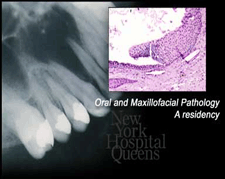المقالات
Torus Palatinus

A torus palatinus is a slow-growing, tumor-like bony growth that develops on the midline of the roof of the mouth. Tori are smooth, and can be either broad and flat, or knob-shaped. They can exist in clusters or as singular growths. They will vary greatly in size, both in diameter and in elevation, and will range from single, slightly elevated nodules or flat lesions, to large bulbous masses. Sometimes, several fused nodules will form a single tumor-like mass. Typically they are little more than an annoyance, causing no pain and requiring no treatment unless they interfere with the placement of a denture. When the torus is large, it is subject to irritation and ulceration from repeated trauma. Once injured, these growths can be slow to heal because of the limited number of blood vessels on their thin tissue surface. They can also become infected and very painful, making it difficult to eat and drink. Occasionally, the underlying bone may become infected, which can be very painful and quite slow to heal. The tendency to develop these growths appears to be hereditary. They occur most frequently in females, Native Americans and Eskimos.
* To guard against the infection that can result from persistent ulceration on the skin that covers the growth.
